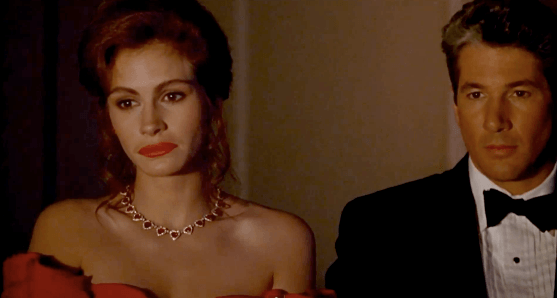It’s no secret that music plays a huge role in how we experience what see on screen – but did you know that opera in particular has lent its powerful compositions to many meaningful moments in film?
From an iconic arrival of US troops to “enjoying the little things” during a zombie apocalypse, check out the below list of opera music that helped shape memorable scenes in these famous films.
“Up” – Featuring Bizet’s “Habanera” from Carmen
Right before this scene, we’ve witnessed the tender and tear-jerking sequence of Carl and Ellie’s married life through the years. We watch as they grow older, evolve through the twists and turns of everyday life, and ultimately how Ellie’s health takes a turn for the worse. Immediately following this 8-minute full-circle love story, we are introduced to Carl’s post-Ellie life with the help of Bizet’s “Habanera” from Carmen. His mundane and monotonous routine is contrasted with the spirited “Habanera,” offering some comedic relief from the previous montage and setting the tone of for the rest of the film, letting audiences know there are more laughs ahead.
“Mission: Impossible – Rouge Nation” – Featuring Puccini’s “Nessun dorma” from Turandot
Recorded for the movie by Lise Lindstrom, Gregory Kunde, and Vienna State Opera, Puccini’s powerful “Nessun dorma” begins as Cruise attempts to take down several assassins during an opera performance. As the setup unfolds, we’re shown one of the assassins flipping through the musical score. You don’t have to know music theory to guess that the last note of the aria, circled in red, is when he’ll pull the trigger – and once you reach that final, climactic high note, you’ll know why. “Nessun dorma” is a victorious aria sung by the character Calaf in Turandot, who falls in love with Princess Turandot and is presented with a challenge in order to win her over. In the aria’s finale, Calaf wails “Vincerò” – or “I will win.” In this scene, it seems Cruise has done just that. Fun fact: This isn’t the first time opera is used in the film. Earlier in the movie, when we first meet the CIA data analyst Benji Dun, he’s playing the video game Halo to Mozart’s The Marriage of Figaro.
“Zombieland” – Featuring Mozart’s Overture to The Marrige of Figaro
I wonder what Mozart would have thought about his classic composition being paired with a zombie movie starring Woody Harrelson. In this scene, the Overture to The Marriage of Figaro heightens the slow-mo destruction of a deserted souvenir shop. Watching these post-apocalyptic misfits shatter glass, topple shelves and destroy everything in sight against the backdrop of Mozart’s satisfying, cheery overture, you can’t help but smile – and maybe even wish you were joining in on the fun on screen.
“Raging bull” – Featuring Mascagni’s Intermezzo from Cavalleria Rusticana
Intermezzo, which is Italian for “interlude,” is a light instrumental composition often performed between acts of a play. This one from Mascagni’s Cavalleria Rusticana is a beautiful piece of music that is actually used in both the beginning and the end of Martin Scorsese’s “Raging Bull,” based on the real-life story of troubled boxing champion Jake La Motta, starring Robert DeNiro. Interestingly, Scorsese pairs this soft, delicate Intermezzo with black and white slow-moving images of a boxer, moving across the ring with a surprising grace. This clever musical match softens the otherwise brutal sport of boxing, and helps establish empathy, which we’ll need as the tragic biopic unfolds. Without this scene, the film might have been experienced very differently.
“The Shawshank Redemption” – Featuring Mozart’s “‘Duettino- Sull’aria” from The Marriage of Figaro
From “The King’s Speech” and “Willie Wonka and the Chocolate Factory” to “Runaway Bride” and even “Looney Toons,” this famous duet from The Marriage of Figaro has been used in many movies and television shows – but perhaps one of the most memorable uses of the aria is in “The Shawshank Redemption.” In this moving scene, soon-to-be escaped prisoner Andy hijacks the record player in the warden’s office and plays the aria over the prison’s loudspeaker. The prisoners stand in silence, experiencing this beautiful duet that so starkly contrasts their everyday lives inside. “It was like some beautiful bird flapped inside our drab little cage and made those walls dissolve away,” says Morgan Freeman’s character over the music in the film. “For the briefest of moments, every last man in Shawshank felt free.”
”Pretty Woman” – Featuring Verdi’s La traviata
Verdi’s heartbreaking La traviata tells the story about a courtesan that falls in love with one of her suitors. Sound familiar? It’s no wonder NPR refers to the opera as “The Original ‘Pretty Woman.’” Not only does the rich suitor Edward (Richard Gere) take his hired escort Vivian (Julia Roberts) to La traviata in the movie, but the film itself appears to be a loose adaptation of the opera, both touching on ideas of social class and taboos through an unorthodox love story. In this scene, we get to see La traviata through Vivan’s eyes, as she makes the connection between herself and the character. Ultimately, it’s happily ever after for Vivan and Edward (let’s not forget this is a romantic comedy after all) – but does it end the same way for the “original” courtesan? I won’t spoil it for you – see for yourself at Palm Beach Opera’s production of La traviata in January!
“Quantam of Solace” – Featuring Puccini’s Tosca
In this scene, James Bond is listening in on a confidential conversation between some very powerful people, sneakily snapping photos and attempting to identify the individuals. The setting? A modern opera production of Tosca. (If you look carefully, you’ll notice that Bond isn’t the only “watchful eye” in this scene – there is a massive eye on the set, watching over the audience.) Tosca is the perfect backdrop to Bond’s mission of taking down the bad guys, especially as we approach the climax of the aria “Te Deum,” (also the end of Act II in the opera) where the character Tosca murders the torturous, power-hungry villain Scarpia, mirroring the violence we’re seeing play out for Bond.
“Philadelphia” – Featuring Giordano’s “La mamma morta” from Andrea Chénier
One of the first mainstream movies to acknowledge the AIDS epidemic, “Philadelphia” tells the story of a young man struggling not only with advancing HIV, but with the ignorance surrounding it. In this poignant scene towards the end of the film, the main character Andrew (Tom Hanks) expresses his acceptance of death through analyzing the beloved opera aria “La mamma morta” in front of his close-minded attorney Joe Miller (Denzel Washington). Sung by opera legend Maria Callas, this powerhouse recording of “La mamma morta” drives Andrew to tears, preparing audiences for the end of this tragic film.
“Atonement” – Featuring Puccini’s “O Soave Fanciulla” from La bohème
It’s no coincidence that director Joe Wright uses one of opera’s most famous love duets to help tell the romantic story of Robbie and Cecilia. In this scene, Robbie plays “O Soave Fanciulla” for inspiration as he attempts to write a letter to Cecilia, seeking amends for an earlier encounter. Against the beautiful music of La bohème, we flip from airy images of Cecilia to a struggling, love-struck Robbie, and the audience realizes the two are in love. In the opera, this aria also marks the moment that the main characters Rodolfo and Mimi realize they are in love – but those who are familiar with the production know that it doesn’t end well for the couple. Was Wright giving us a clue when he chose this aria for Robbie and Cecilia?
“Apocalypse Now” – Featuring Wagner’s Ride of the Valkyries
Perhaps one of the most iconic uses of opera in a film is in “Apocalypse Now,” when intimidating US troops arrive to destroy a Vietnam village. As the powerful and dominating music of Ride of the Valkyries plays on the helicopters’ loudspeakers, missiles are dropped from the sky, growing with intensity as Wagner’s looming music picks up. Francis Ford Coppola wanted to show the horror of war – highlight “the madness, the sensuousness, and the moral dilemma of the Vietnam War,” he said in a statement prior to the release of the film in 1979 – and this violent and disturbing scene, with the help of the bellowing Valkyries, helps communicate just that. Disclaimer: this clip contains graphic images that some viewers may find disturbing.
It’s no coincidence that film directors across various genres – and generations – choose opera to help tell their stories. Whether it’s historical fiction, comedy, action or drama, opera continues to enhance what we see on screen, having a direct impact on how we experience these film-defining moments.


